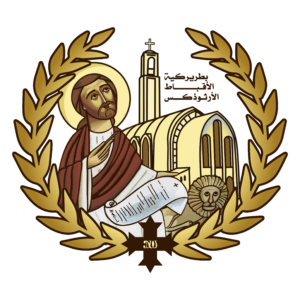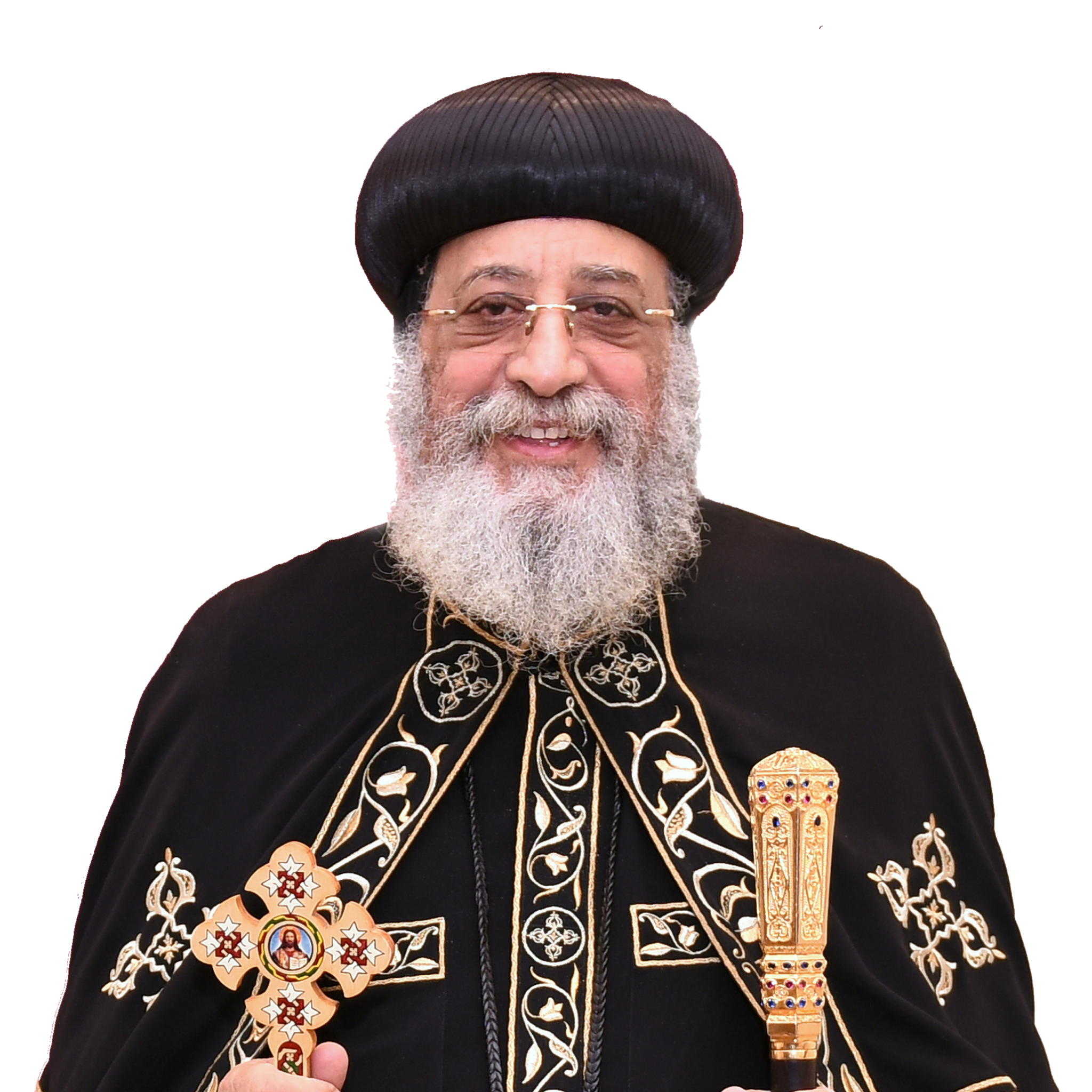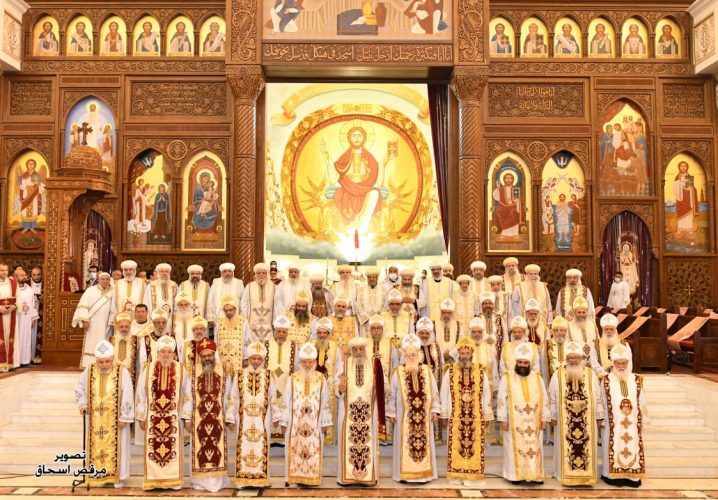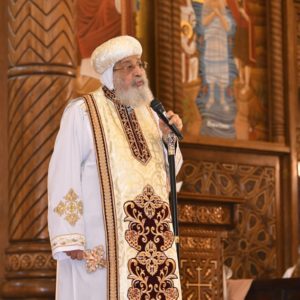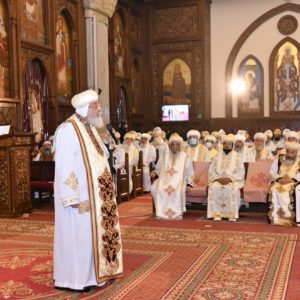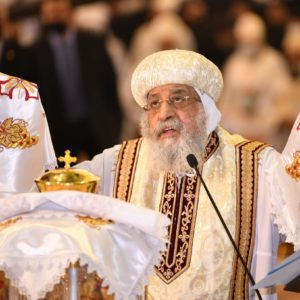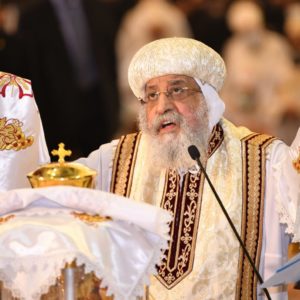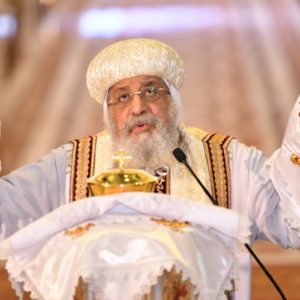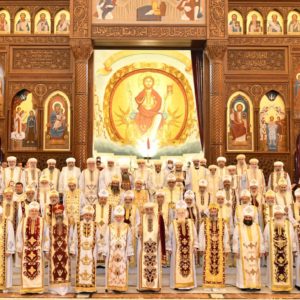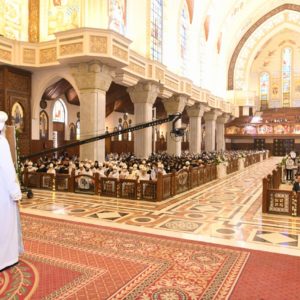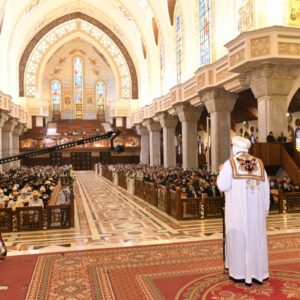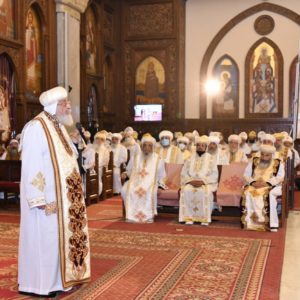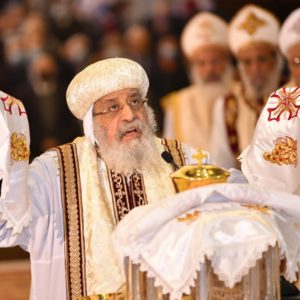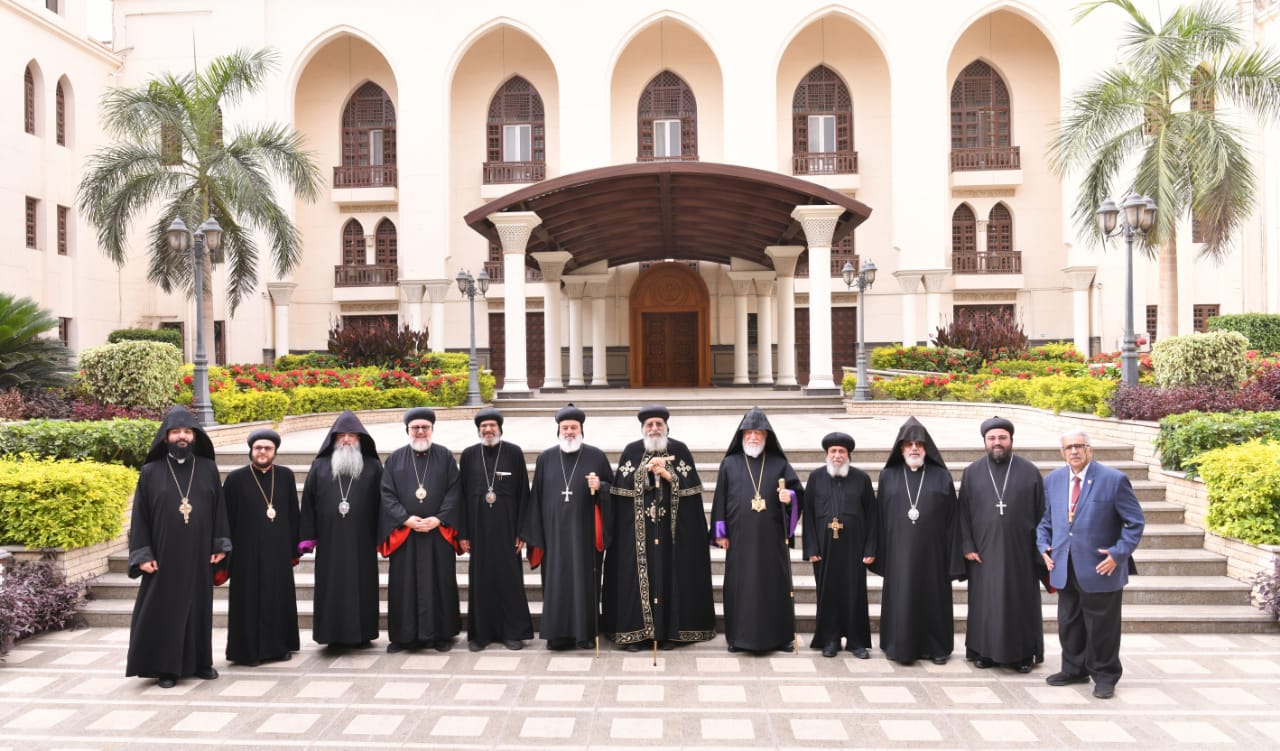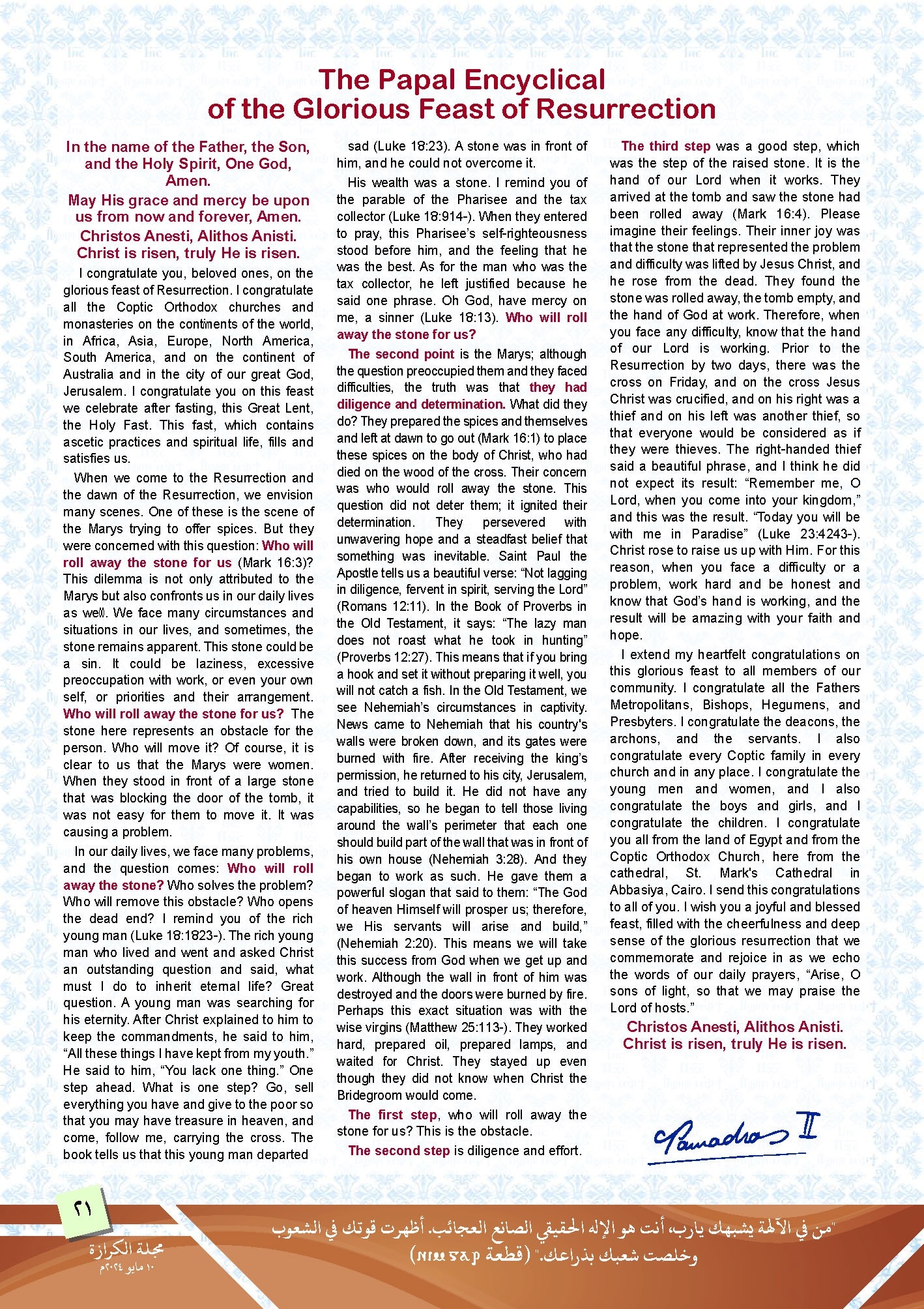Today, H.H Pope Tawadros II prayed the Divine Liturgy on Thursday of the third week of fasting, at St. Mark’s Cathedral in Anba Ruwais, in the occasion of the tenth Anniversary of the departure of the H.H. Pope Shenouda III, the 117th Patriarch.
Ten plaintiffs and a large number of Fathers and monks contributed in the prayer. The Divine Liturgy included the ordination of 29 priests from the churches of Cairo to the Rank of Hegumen, by H.H. Pope Tawadros II.
H.H tackled in his sermon 3 things that distinguished the late Pope Shenouda III, and he said:
Today we celebrate a great Coptic pioneer that influenced Egyptian and Coptic history, the late Pope Shenouda III, who was a lover of the Bible, of monasticism and the monastery, and of ecumenical relations with the churches of the world.
He pointed out the three things that distinguished him:
Education:
He paid attention to education and interpret the Bible and religious and theological topics in a simple and profound way.
The monastic reconstruction:
He loved monasticism with all his heart, he used to spend a lot of time in the monastery while He was a bishop, and as being a patriarch. He reconstructed monasteries inside and outside Egypt, in America, Europe, Australia, and Africa.
Ecumenical relations:
Our church was one of the first churches to participate in the World Council of Churches in Geneva, Switzerland, in the days of the late Pope Joseph II, and ecumenical work continued during the days of Pope Kyrollos VI, and Pope Shenouda III, who worked to establish the Middle East Council of Churches in Beirut, as well as the Council of Churches of All Africa. , in Nairobi, Kenya. A few months before his departure, he began his consultations and preparations for the establishment of the Council of Churches of Egypt, and the council was opened about a year after his departure.
He was the first Coptic Patriarch to visit the Vatican, and establish relations with the Catholic Church, in May 1973. The visit resulted in an official statement signed by Pope Shenouda and Pope Paul VI. This statement is a strong foundation for the relations that exist between the two churches. On the basis of the statement, theological dialogues were established between the Eastern Churches (the Oriental) and with the Catholic Church. The result of all this is the mutual understanding between the two churches.
He cared for the communication with the Byzantine churches, and communication resulted in an agreement on the nature of Christ
He visited most of the world’s Orthodox Chalcedonian, non-Chalcedonian, Catholic, Evangelical and Episcopal churches and exchanged visits with them. He was interested in these good relations that bring everyone together, and was interested in theological dialogues, loving visits, and receiving fathers and leaders of these churches here in Egypt to learn about the correct history of our Egyptian Church.
He was truly a strong supporter of these relationships, which include the churches of the world.
In the late seventies, he received the largest award in Christian education granted by Protestant institutions given to him as a distinguished Christian preacher.
The presence of the Pope, with his great experience in the Bible, the writings of the Fathers, knowledge of faiths, and his literary talents in history, poetry, and literature, all of these were gathering in him and helping and strengthening him in making our church in the theological dialogues have a place.
Making the Coptic Church a “beacon”, so that when it is present anywhere, it is not afraid of anything, but rather presents its experience, history, experiences, knowledge and straight faith to all.
This page is also available in:
العربية
